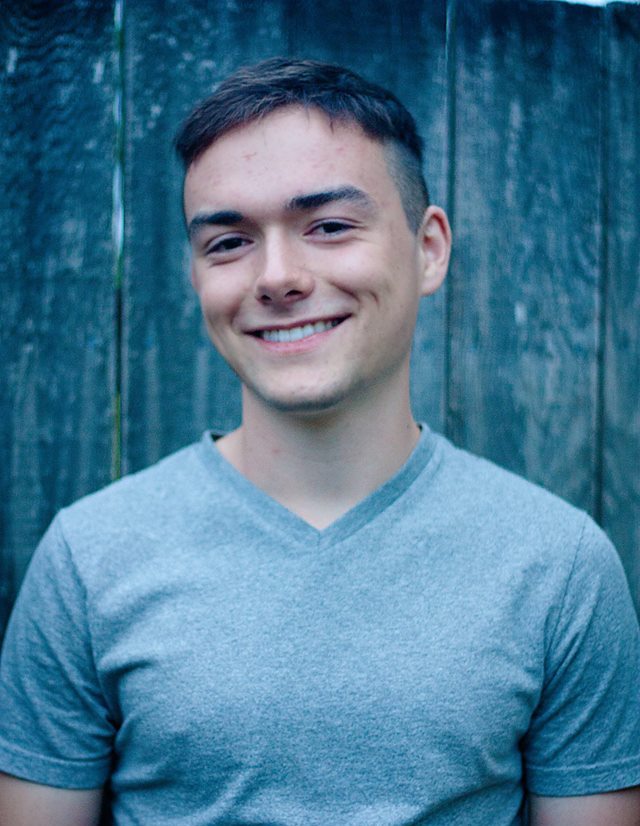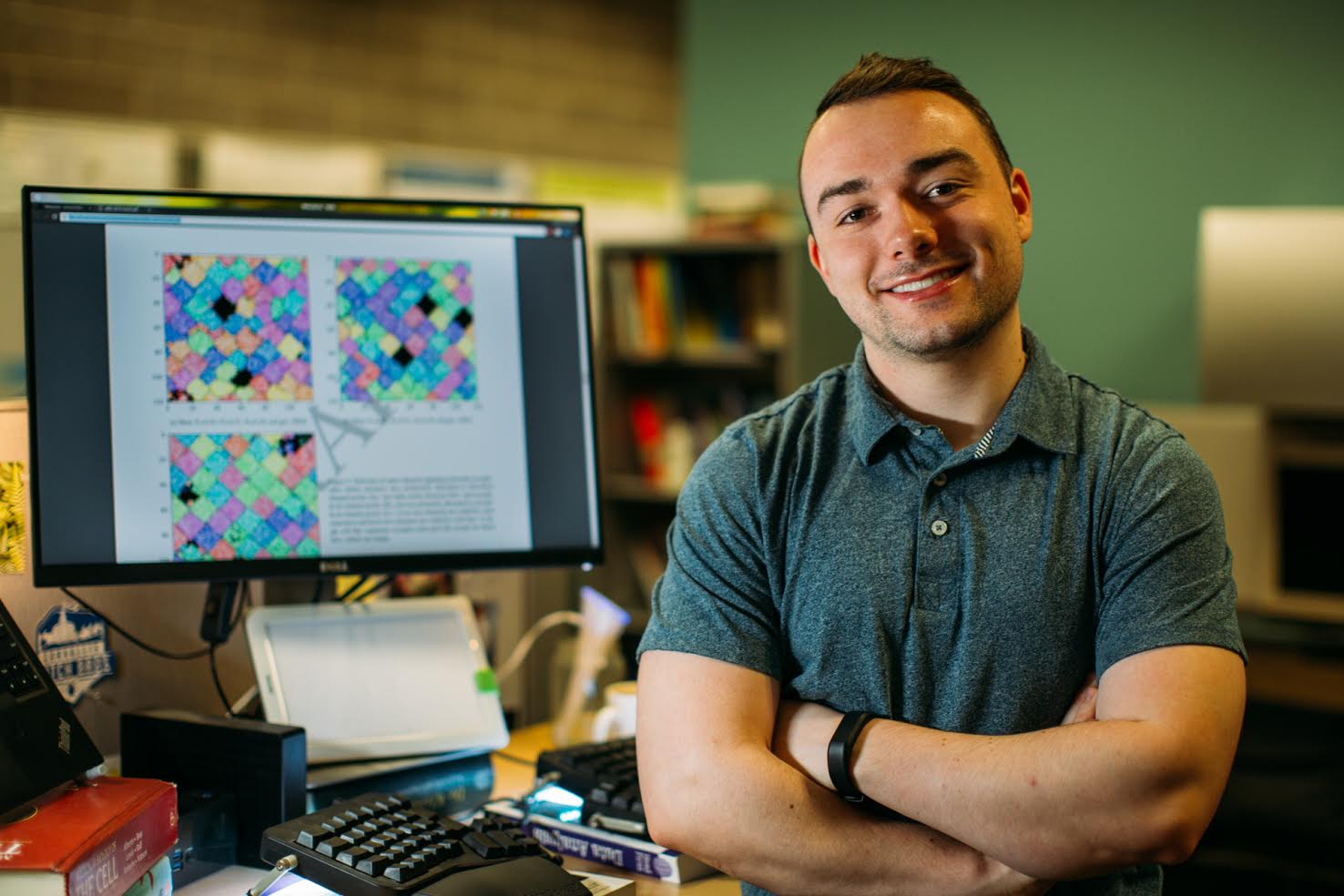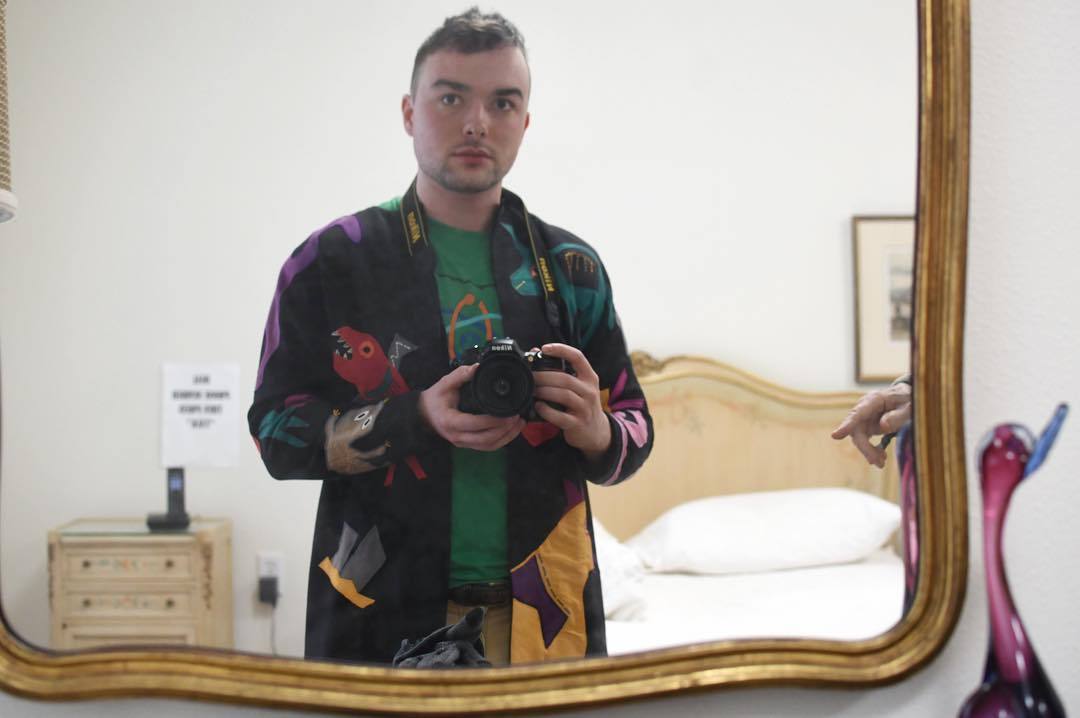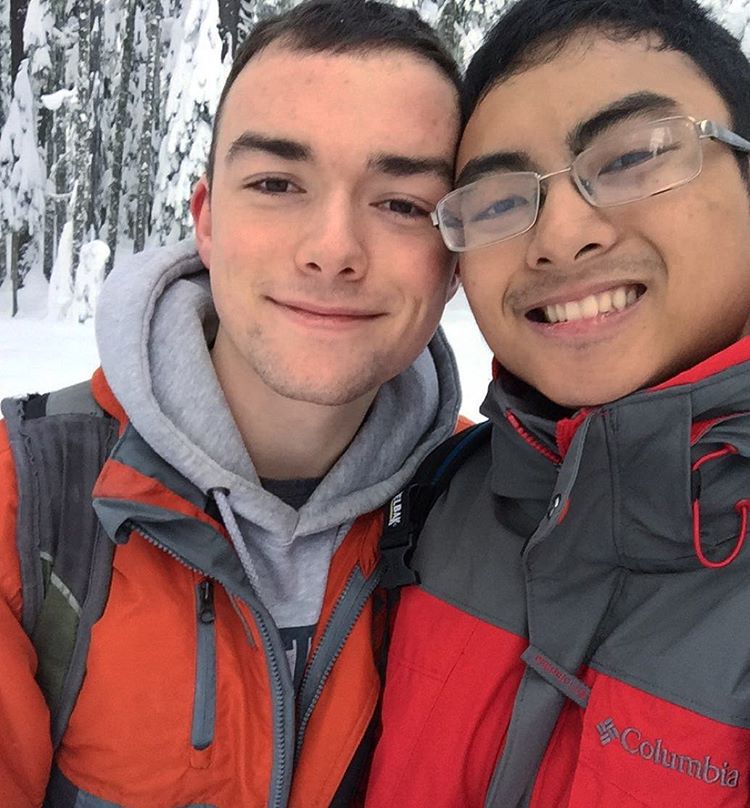Bio


I am currently a postdoctoral scholar at the University of Michigan associated with the Ecology and Evolutionary Biology department and the Complex Systems and Michigan Institute for Data Science programs. I am a member of the Eric and Wendy Schmidt AI in Science Postdoctoral Fellowship program. My research interest is in using digital evolution techniques to investigate scientific questions about evolution. I currently study major transitions in evolution and evolvability.
Previously, I was a doctoral student at the Michigan State University in both the Department of Computer Science and Engineering and the Ecology and Evolutionary Biology program. I worked with the Digital Evolution Lab, led by Dr. Charles Ofria, and was associated with the BEACON Center for Evolution in Action.
I grew up in Corvallis, Oregon then moved to Tacoma, Washington to attend the University of Puget Sound. In 2017, I graduated as a Coolidge Otis Chapman Honors Scholar with majors in Mathematics and Computer Science and a minor in Chemistry. My undergraduate thesis and capstone work, respectively, investigated theoretical aspects of evolvability and probed the relationship between evolvability and plasticity through computational experimentation. Dr. America Chambers served as my thesis advisor.


In my spare time, I like to take pictures. You can look at a few of them here. I particularly love the green spaces around Corvallis, which appear frequently in my photographs. As an undergraduate, I played oboe with the University of Puget Sound Wind Ensemble and tutored at the Center for Writing, Learning, and Teaching. I also wrote for the University of Puget Sound Sound Economics Blog, which you can read here.
Teaching Statement
To best reach learning outcomes, foster professional identity, invigorate department community, and engage student curiosity, I strive to center the ethos of allyship in my teaching. First and foremost, this means acting to better computer science by supporting the recruitment, retention, and advancement of students from historically marginalized backgrounds within the field. However, engaging this lens of allyship has made me a more effective educator to all my students -—- including students with privileged backgrounds —– by strengthening my capacity to critically assess existing practices for barriers to both student learning and professional inclusion and then implement intentional, effective interventions to address those barriers. I do this by infusing my practice with anti-racist principles, growth-oriented framing, explicit and structured student objectives, directive feedback, authentic relationships of trust, active learning experiences, independent student scholarly work, flexibility to rapidly adjust day-to-day aspects of instruction based on classroom conditions, and a willingness to make more fundamental adjustments based on critical self-reflection and evidence—based analysis.
Throughout my career, I have actively sought out opportunities to engage in educational allyship and grow as an effective ally. Among these, the most consequential has been my four years with the primarily minority-serving Summer Research Opportunities Program (SROP) at Michigan State University. SROP’s modus operandi challenged me to grow in unfamiliar and, at first, uncomfortable dimensions of teaching: directly confronting shortcomings in student performance —- especially regarding preparation, engagement, or follow through —- and establishing expectations for improvement to demonstrate to the students that I truly believed them capable of meeting those expectations.
SROP’s minority-serving mission is carried out by an all racial and ethnnic minority leadership team. Engaging in this environment exposed me to praxis for advancing minority students fundamentally different from my experience in predominantly white spaces. Instead of emphasizing reduction of harm to students by minimizing biased policy and exclusionary social dynamics, SROP’s leadership pursued a proactive approach to catch students up on commonly informally- or un-taught research skills and provide an explicitly-structured working environment that many are accustomed to operating in (Stanich, 2018). By the end of the program, we helped our students develop capabilities to clearly and persuasively communicate their research question to audiences inside and outside their field, as well as showcase their professional accomplishments, qualifications, and objectives with a fleshed-out curriculum vitae and personal statement. Reaching these learning objectives required me to pay close attention to technical aspects of students’ work to detect deeper, fundamental knowledge gaps and provide directive feedback and guidance where necessary. Through this work, I have developed an emphasis on establishing and structuring expectations for excellence as a crucial component of my inclusive pedagogy playbook.
Through SROP, I learned to pursue rigor within an encouraging framework. My role with the program included leading regular rehearsal talk sessions for twelve students; we met weekly for two and a half months — the entire course of their research experience. I challenged each student’s understanding of the motivation and design of their project. A key goal, we facilitators were instructed, was to drill down persistently until we broke through to “I don’t know.” From my fellow mentors, I picked up how to pursue this rigor within an encouraging, positive framework. I established a growth-oriented atmosphere by instructing students to follow up on difficult questions next week, and providing direct guidance for discussions with their research mentor where necessary.
Another core aspect of my allyship is developing authentic personal relationships of trust with students and making myself present to listen and respond to factors outside the classroom intersecting their experience as a student. One of my greatest challenges as an educator was developing strategies to effectively serve students as a volunteer teaching assistant in a remedial math classroom at MacDonald Middle School in East Lansing. On one particularly difficult day, one of our students —- a young Black man —- was squirmming over, under, and around his chair with an untouched worksheet on his desk. I tried to encourage him, “Hey. This one looks easy. I know you know how to do this one. Why don’t you give at least three a try.” He just put his head down on the desk. After a few minutes, he theatrically scooted his chair across the classroom and out the door. I followed him out and just sat against the wall.
He squirmed around a bit more then said something about snacks. He hadn’t had breakfast. “Yeah,” I said, “that’ll make it hard to concentrate.” We sat there for a few minutes before I realized I could go and grab something from the teacher’s lounge. Once he had some pretzels, he just started doing his math worksheet. He didn’t even need any help. While he was working we talked about the band instruments we each played and about my home state of Oregon a bit. His older brother liked the University of Oregon Ducks. Mostly, though, I just sat there and ate pretzels with him. He got the entire worksheet done and he even showed me the method his dad had taught him to do division. This experience reinforced to me the necessity for effective teaching to consider and serve students holistically.
For another, female, white, neurodivergent client during my time as an undergraduate peer mentor specializing in learning disabilities, this committment to holistic teaching meant deciding to entirely set aside the agenda she had originally scheduled to focus instead on her overwhelming tsunami of converging deadlines and responsibilities outside school. After about fifteen minutes of unstructured chat, I pulled out a piece of paper and suggested that we work together to create a prioritized todo list for her. I acted as a scribe while she guided the conversation. We worked together to break vague or intimidating tasks into smaller, more concrete action items. Everything from laundry to an evolutionary biology reading ended up on the list, which she later told me she hung up on her bedroom door. This experience reinforced to me the importance of explicitly structuring learning work for students who need it and, particularly, being willing to directly coach organization and study skills.
My service as a teaching assistant for the upper-division CSE 431 “Algorithms Engineering” course during fall 2021 challenged me to apply my ethos of allyship into a larger, more traditional classroom setting. During our class periods, I quickly noticed that our active learning exercises were translating poorly into the hybrid-remote paradigm. Pedagogy research strongly connects active learning strategies to improved student outcomes (particularly with respect to underrepresented groups) (Freeman, 2014; Wieman, 2014; Theobald et al., 2020), so ensuring successful implementation was crucial to effectively and equitably accomplishing our course objectives. However, conversation within our virtual breakout rooms quickly to solve a problem or reflect on a concept would quickly fizzle out. Even though remote students constituted a minority of the class population, I discovered special instructor attention would be necessary to provide equitable active learning experiences to this population. However, I also found that, loitering in breakout rooms to kindle discussions, my presence as an instructor shifted group dynamics away from authentic peer-peer engagement. So, I adjusted my strategy to instead hop rapidly between rooms and interject myself only as an intermittent catalyst. In addition, we found that forming larger groups of six to eight students in the remote setting (compared to the smaller groups of three to four students in the in-person setting) helped ensure sustained discussion. This experience lent me humility to expect occasional pedagogical misfires and build potential adjustments into my lesson planning.
Recognition of and adjustment to aspects of instruction not effectively serving students also drove my approach to performing more-traditional lecture components of CSE 431. When I taught class sessions on NP completeness, I chose an intuition-first approach to prepare students for abstract, rigorous concepts by priming their thinking with lighthearted visual analogies followed by simple examples. Seeking and incoporating feedback from the instructor of record greatly benefited my lectures. To challenge students to internalize newly introduced concepts and bring forward unclear points in my delivery, I broke my slide deck up with explicit reflection and comprehension questions. However, I initially failed to earn student engagement in the interspersed conversational elements of my lecture. After posing a question, I’d have no takers. After prompting more directly, more often than not I’d only receive an eventual murmured collective response. I realized I needed to adjust my approach and switched away from a question-answer format to a moderation-style interaction model. I intentionally de-centralized myself as the focus of the conversation by soliciting comments and responses from fellow students instead of reacting myself. Refusing to lecture only on my own terms, I found that framing student input as an incremental mosaic of class conversation much more effective than framing responses as just a right (or potentially wrong) answer. More broadly, I have found this mentality of critical self-assessment particularly crucial when working to effectively serve classrooms or mentees with backgrounds very different from my own in order to push beyond my own cultural, social, and disciplinary norms.
To effectively and equitably advance our students and our profession, I know that my educational allyship must extend beyond day-to-day and semester-long tactical considerations within the context of a given classroom to strategic initiatives on the scale of overall curriculum and beyond. I have led two such efforts at Michigan State University: I organized an upper-division for-credit discussion group on advanced C++ topics (CSE 491) and a paid, full-time, fully remote undergraduate research experience (WAVES, the Workshop for Avida-Ed Software Development). The former addressed a scarcity in small-group, seminar-style class offerings aimed at promoting self-directed inquiry in our department and the latter grew out of a sudden need for fully-remote mentored research experiences for undergraduates in the summer of 2020. For both, we chose public-facing blog posts with a formalized peer review process as the capstone activity and primary assessment objective, in line with our objective in both cases to develop participants’ capability for self-directed scholarly work. My experience with SROP guided my design for the rest of the WAVES curriculum, which comprised an intensive series of onboarding tutorials followed by highly-structured weekly group check-in meetings and professional development seminars. SROP and WAVES significantly impacted students’ careers. One of our approximately fifteen CSE 491 students was a Black woman who went on to work on C++ compiler technologies at Apple. Over our first summer of WAVES and our reprisal of the workshop in 2021, a majority of participants — 20 out of 27 (74%) — were members of a historically underadvantaged group in computer science. Pre- and post—workshop survey data showed that we made progress in “catching up” underadvantaged students with their peers with respect to C++ and JavaScript proficiency (Moreno, 2022).
As I progress my own career as a teacher and mentor, I look forward to refining and expanding my lens of educational allyship to better serve my students’ diverse journeys toward excellence in their professional objectives. I look forward to the opportunity to leverage my direct instruction experience in introductory programming, algorithm engineering, modern C++ software engineering, and professional communication courses. Additionally, I would be enthusiastic to build on my experience in curriculum design and develop or revamp courses exploring aspects of my research activities including WebAssembly compilation technologies, parallel/distributed computing, evolutionary computation, and artificial life.
References
Moreno, Matthew Andres. “WAVES Workshop Learning Outcomes.” WAVES Workshop Blog (2022). http://mmore500.com/waves/blog/proficiency-satisfaction.html.
Freeman, Scott, et al. “Active learning increases student performance in science, engineering, and mathematics.” Proceedings of the national academy of sciences 111.23 (2014): 8410-8415.
Stanich, Cynthia A., et al. “A new approach to supplementary instruction narrows achievement and affect gaps for underrepresented minorities, first-generation students, and women.” Chemistry Education Research and Practice 19.3 (2018): 846-866.
Theobald, Elli J., et al. “Active learning narrows achievement gaps for underrepresented students in undergraduate science, technology, engineering, and math.” Proceedings of the National Academy of Sciences 117.12 (2020): 6476-6483
Wieman, Carl E. “Large-scale comparison of science teaching methods sends clear message.” Proceedings of the National Academy of Sciences 111.23 (2014): 8319-8320.